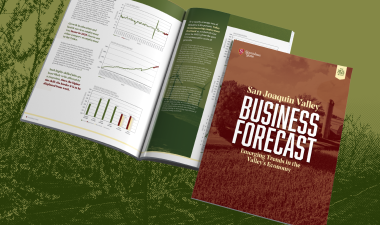The Central Valley economy continues to give mixed signals, showing signs of resilience despite persistent inflation and generationally high interest rates.
The core inflation rate was near 2.2 percent during the first quarter of 2024, which is much closer to the Federal Reserve’s preferred target rate of 2 percent than it was a year ago. However, a gradual decline in employment and high oil prices have kept inflation high.
Experts warn that without interest rate cuts, the labor market’s downturn — evident from declines in employment during the normally robust months of July and August — could reach a critical crossroad.
To protect themselves against economic uncertainties, Valley residents can consider the following actions:
- Postponing home purchases and continuing to rent;
- Holding on to a cushion of cash reserves;
- Taking advantage of interest rates by purchasing bonds; and
- Taking out flexible-rate loans and leveraging inexpensive student loans to acquire advanced skills.
These recommendations and the outlook for the remainder of 2024 are detailed in the biannual San Joaquin Valley Business Forecast, produced by Gökçe Soydemir, the Foster Farms endowed professor of business economics at Stanislaus State.
Among the highlights:
Employment Indicators
In 2023, Valley total employment began declining during the seasonal peak months of July and August, which normally register the fastest growth rates during a normal year, and employment has been declining month after month except for January and March of 2024. Five of the eight counties in the Valley reported declines in 2023, whereas more had reported growth in 2022. The employment categories that reported a decline in the Valley were construction, retail trade, financial activities, trade, transportation and utilities and information employment.
Housing Sector
Valley building permits declined 1.09 percent in 2023, indicating a continued decline into 2024. Valley housing permits are projected to decline to an average of 700 and rise back to 1,000 per month by the first half of 2026. Since people mostly held on to their jobs in 2023, there were no foreclosures, unlike prior years. Home values increased in 2023 but at rates much slower than in prior years. Homeowners are holding on to their homes to avoid facing high interest rates, creating an inventory shortage that is putting upward pressure on home values.
Inflation and Prices
The average rate of inflation nearly halved from 8 percent in 2022 to 4.32 percent in 2023 but still is about 2 percent higher than the Federal Reserve’s target rate of 2 percent. Average weekly wages rose 3.92 percent in 2023, below the overall price growth of 4.32 percent, corresponding to a fall in real wages and an annual loss in purchasing power of 0.4 percent in the Valley.
Banking and Capital Markets
Valley community bank total deposits fell from 10.1 percent growth in 2022 to a 1.44 percent decline in 2023. This decline is partly attributed to bank closures and mergers with banks outside the region. In contrast, net loans and leases grew 6.55 percent in 2023. Such an imbalance between deposit growth and net loans and leases raises concerns for long-term sustainability.



